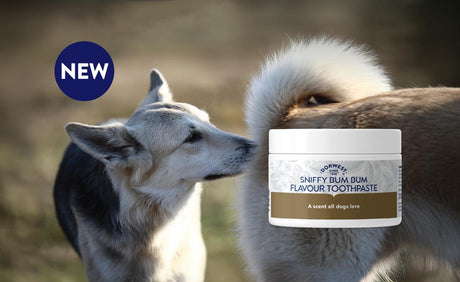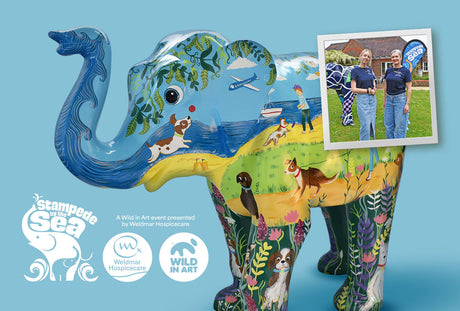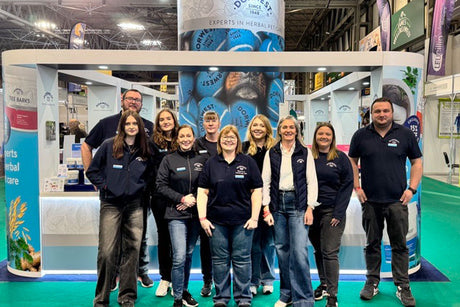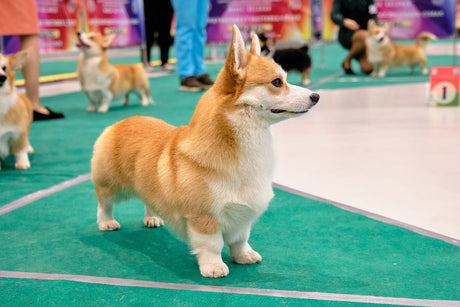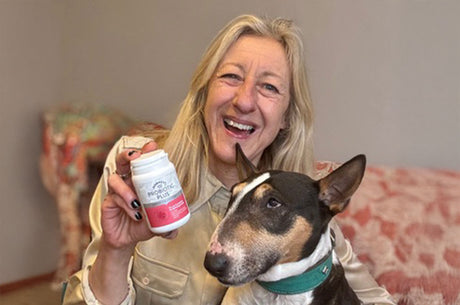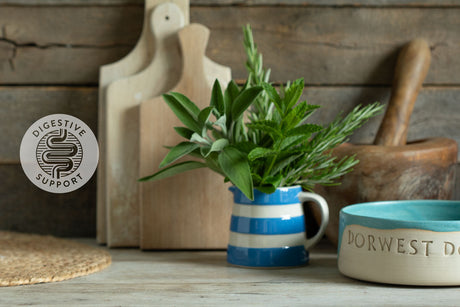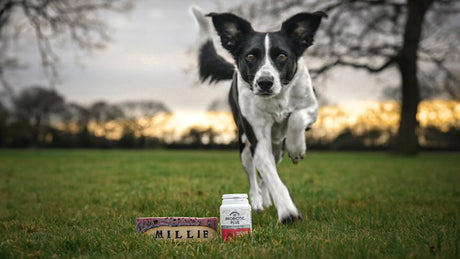
A bit of fresh air can do us all the world of good. The same applies to our dogs who love nothing more than a quick sniff. So what better place to enjoy the great outdoors, than in your own garden. But is your garden dog friendly? You might want to double-check! Take a peek at our top tips for a dog friendly garden...
SECURE THE PARAMETERS!
The first may seem an obvious point but you may be surprised by just how clever some dogs can be when it comes to finding an escape route from gardens. The temptation to take themselves for a walk can be too much for some dogs! On a serious note, if your dog does escape, this does leave them vulnerable to road traffic accidents and even being stolen. So how can you ensure your dog is secure in your garden?
Firstly, ensure you have secure, solid fencing, with no opportunities to squeeze through any gaps. When checking the security of your dog friendly garden, look at your fencing through the eyes of your dog. Look at the fencing from their level and consider their size. You might think an area is secure but some dogs can squeeze through the smallest of gaps to reach the big outdoors. They can also jump higher than you might expect!
Regularly checking your fencing is important, in case any security breaches have occurred! For example, wildlife may have found a new way into your garden (which is lovely) but make sure your dogs can't get through it too. If your dog enjoys digging, you should also check they haven't done so near any fencing, as overtime, this could make a great place to escape.
If your garden has a gate leading to the outdoors, always ensure the gate is secured. You may have left it open inadvertently to talk to a friend walking by. Dogs can take any opportunity to be curious, so always check everything has closed behind you. A self-closing gate would certainly help ensure this too.
TIME TO AVOID THESE PLANTS...
There are key times of the year for planting new plants. For example, March to early May or late September to October. Did you know some plants can be toxic to dogs though? Well sadly they can, so before adding any new plants to your garden, always research online so you're not inadvertently adding ones which could prove to be harmful to your four-legged friend.
Common plants to avoid include: daffodils, crocuses, azaleas/rhododendron and tulips. The bulbs themselves, as well as the plants, can be toxic. Whatever plants you choose to add to your garden, always ensure your dog doesn’t have the opportunity to dig up any bulbs at all.
Some trees and hedgerows can also be dangerous for dogs. If you have an oak or horse chestnut tree in your garden, be mindful or the conkers and acorns at key times of the year, as they are highly toxic to dogs. Laburnum trees and yew trees can also be highly toxic.
THE DANGERS OF COMPOST
If you are a keen gardener, it's possible you may have your very own compost heap. But did you know, compost can be potentially toxic to dogs? The old food products you add to your compost bin will eventually grow mould. It's this mould which can be highly toxic due to it creating compounds called mycotoxins. If ingested, these can cause vomiting, diarrhoea and even seizures. In some cases, surgery has even been required.
So if you have your own compost bin, it is crucial to ensure it is not within reach of your dog. Keep it separately fenced off so your dog doesn't have any opportunity to reach it.

ANY WATER FEATURES IN YOUR GARDEN?
Water features, such as ponds, can be a lovely addition to any garden. While the depths may not be the deepest, they are still a potential drowning hazard for pets. For example, once a dog's coat becomes waterlogged, it can be difficult for a dog to pull themselves out of water. An edge of a pond, which may normally seem low enough, may now be too high to reach with a heavy coat in tow (and if panic sets in). Something placed in the water to give the dog leverage would help, should the worst happen. For example, flat stones. Or if possible, keep the water feature separated to ensure your pet can't be tempted to pop a paw in and then accidentally fall in.
If your pond is accessible though, it's important to always watch your dog while they're in the garden. This is the best way of maintaining a dog friendly garden. Accidents can sadly happen in seconds. The same applies if you're fortunate enough to have a swimming pool. Even if the cover is placed on top, dogs can fall in and get trapped underneath the covering.
KEEP GARDENING TOOLS IN A SAFE PLACE
It can take a lot of work to maintain a beautiful garden and sometimes you'll need a set of tools to help you. As you know, a lot of these tools can be very sharp. When dogs go outside, many love to run around the garden at fast speeds to let off some steam. Always ensure all tools are carefully put away in a secured place to ensure your dog doesn't accidentally crash into them and cause themselves an injury. Cuts can easily happen and can become infected, so it's best to ensure all gardening tools are kept at a distance to maintain a dog friendly garden.
The same applies when using a lawnmower. Dogs can be very intrigued by anything new so it can be funny to watch your dog running around and barking at the lawn mower. Should they get too close while you're mowing the lawn though, terrible injuries can occur in the blink of an eye. It's best your pets are safely inside when undertaking this type of work in your garden.
Should you feel the need to use any chemicals in your garden, it is crucial these are kept out of reach from your dog. Some can be highly toxic to dogs, so always read the labels carefully and be mindful of where you use them. They should also be stored in an area which can't be accessed by your dog. Ingesting the smallest bit of some of the chemicals can be deadly. If possible, avoid using all together to avoid the worst from happening.
TIME TO ENJOY YOUR DOG FRIENDLY GARDEN!
So now you have a dog friendly garden, it's time to actually enjoy it! Sitting in the garden with your dog can be a lovely bonding experience for both of you. It can also prove a fun place to be with opportunities to play ball and other games. Why not bring some of your dogs toys from inside to the outside, so they can enjoy them in a new environment? Make sure they have access to water and the opportunity to come back inside should they want to.
Have you also ever considered planting some plants or herbs specifically for your dog? They can add some sensory stimulation and some are even dog-friendly if eaten. Why not add some clivers/stickyweed or wheatgrass to your garden? They’re dog friendly and dogs tend to really enjoy them when they discover some during walkies - wouldn’t it be great if they could enjoy some a bit closer to home too? Other great herbs which your dog may love to sniff include lavender and rosemary. They provide some wonderful calming aromas for your four-legged friend to sniff and enjoy.
How do you like to enjoy your garden with your dog? We'd love to hear from you...
*Should you ever be concerned your dog has ingested something from your garden which they shouldn't have, always consult your vet.
Find out more about Dorwest Herbs and our herbal remedies for dogs to improve their general health. If you have any questions about the best ways to ensure your dog gets the best diet, one of our experienced advisors would be happy to help. Please get in touch on 01308 897272 or use our contact form. Plus, get free UK delivery on orders over £50.
